- 1. Roman Temple of Diana
- 2. Chapel of Bones
- 3. Évora Cathedral
- 4. Igreja dos Lóios
- 5. Giraldo Square
- 6. Évora Museum
- 7. Dom Manuel Palace
- 8. Igreja da Misericórdia
- 9. Évora University
- 10. Almendres Cromlech
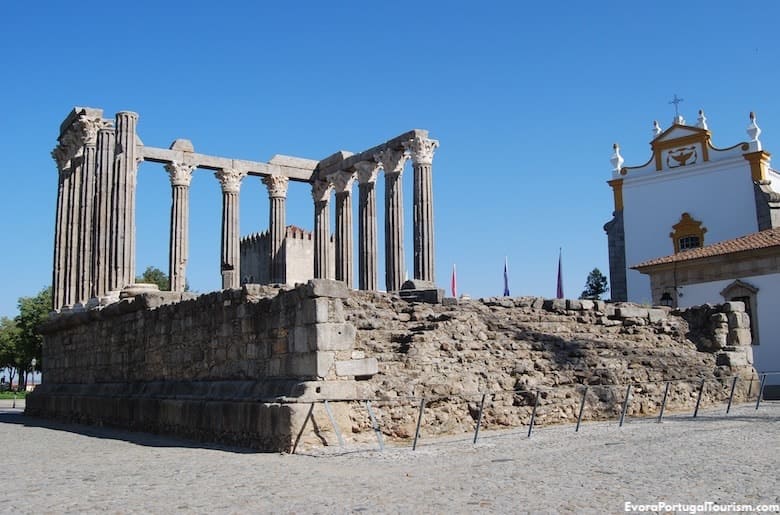
Évora’s most iconic landmark is one of the best-preserved Roman monuments in the Iberian Peninsula. Built 2000 years ago, it was traditionally believed to have been dedicated to Diana, the goddess of hunting, but scholars now say it was actually dedicated to emperor Augustus. Although it has lost its roof, the reflecting pool that surrounded it, and four of its 18 columns, it’s easy to imagine what it looked like intact.
See the Roman Temple of Diana Guide.
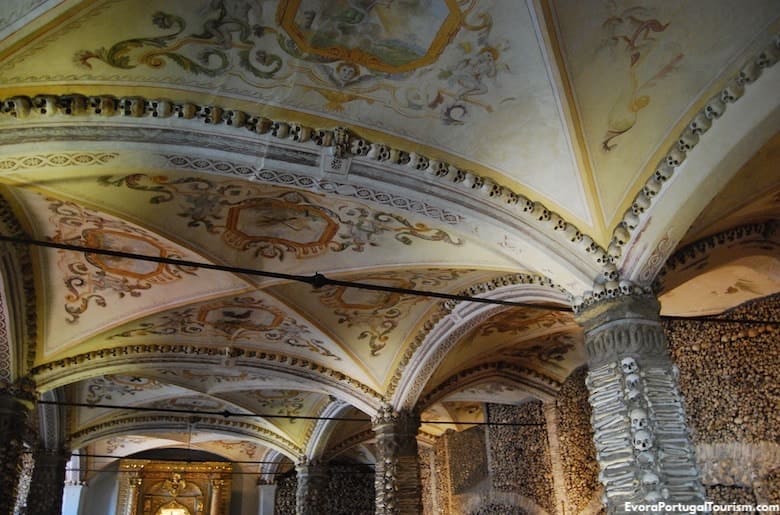
There’s a reason why this is one of Évora’s most visited attractions. It’s a fascinating and impressive display of human bones and skulls, creating decorative patterns on walls and columns. It’s the city’s most memorable sight, and is part of a royal church from 1480, which should be visited even if the chapel of bones is just too morbid for you. The church is next door to the chapel, and is one of Portugal’s finest constructions in the Gothic and Manueline (Portuguese Gothic) styles. It includes a museum with sacred art and paintings that were originally in convents.
See the Chapel of Bones Guide.
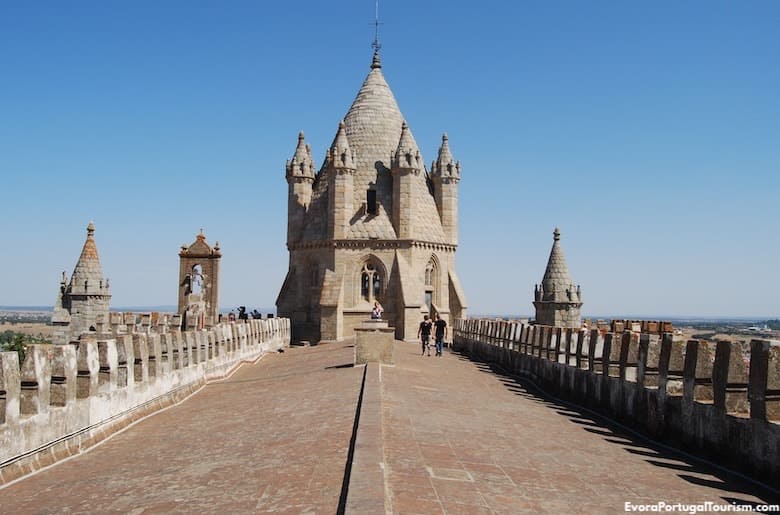
Portugal’s largest medieval cathedral looks like a fortress, combining different architectural styles. It was where the flags of Vasco da Gama’s ships were blessed before he departed for India in 1497, when this was still a Romanesque and Gothic building. It already had the impressive marble portal carved with images of the twelve apostles, but the Baroque chancel was added later. It houses one of Europe’s oldest Renaissance organs and has a small museum of sacred art, but the highlight is the view from the terrace, reached via one of the bell towers.
See the Évora Cathedral Guide.
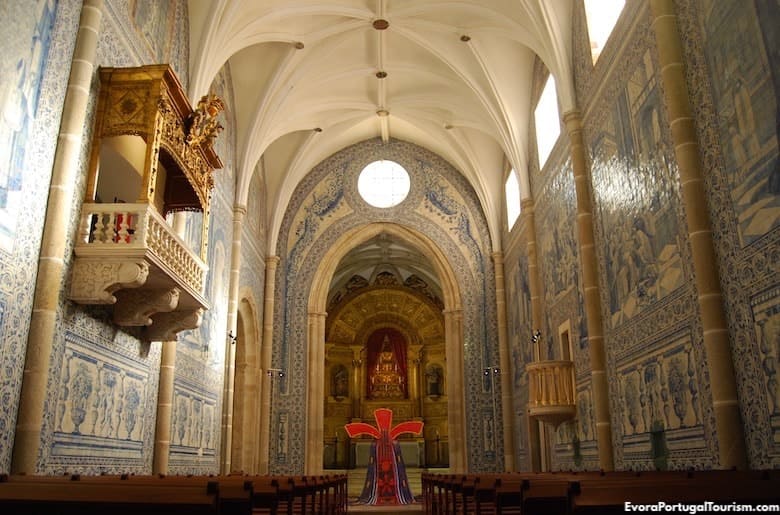
It’s Évora’s most beautiful church and also one of Portugal’s. It was built as the private temple of a count and his family in 1485, and was also once part of a convent and of a 14th-century palace. That convent is now a hotel, and the palace is still inhabited by an aristocratic family, but the church is open to visitors. Although it’s accessed through a Gothic portal, its interior is Baroque, with walls covered with tile panels, created in 1711 by one of the masters of tile painting.
See the Igreja dos Lóios Guide.
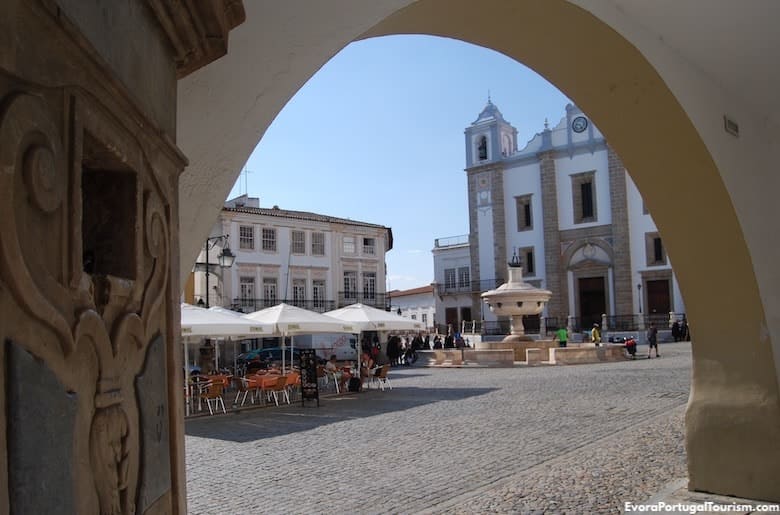
Évora’s main square is the heart of the city and the perfect place to start a walk through the World Heritage center. It’s home to the tourist office and outdoor cafés that make it a lively place at any time of the day. It’s surrounded by arcaded buildings and faced by a Renaissance church that served as a model for others in the region. From here you can walk down the city’s main shopping street or up the street that leads to the Roman temple and the cathedral.
See the Giraldo Square Guide.
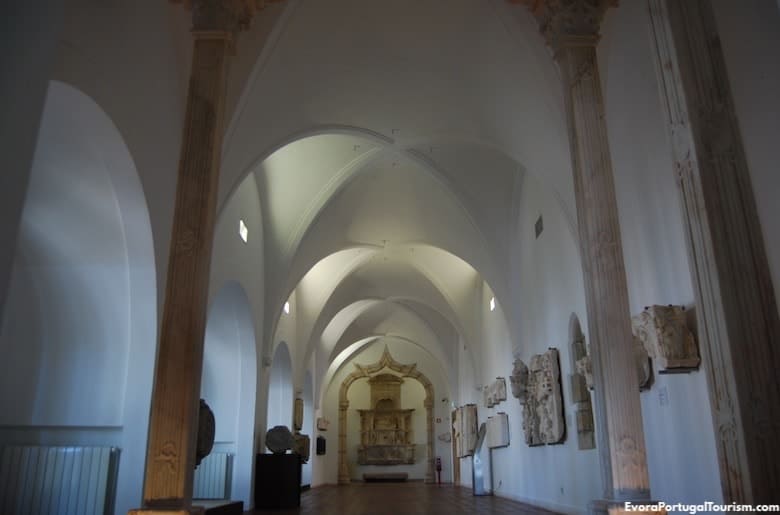
Officially named Frei Manuel do Cenáculo National Museum, everyone knows it by its older and much more memorable name, Évora Museum. It’s the former archbishops' palace, now home to a collection of Roman sculptures, Visigothic and medieval artifacts, and Portuguese and Flemish paintings.
See the Évora Museum Guide.
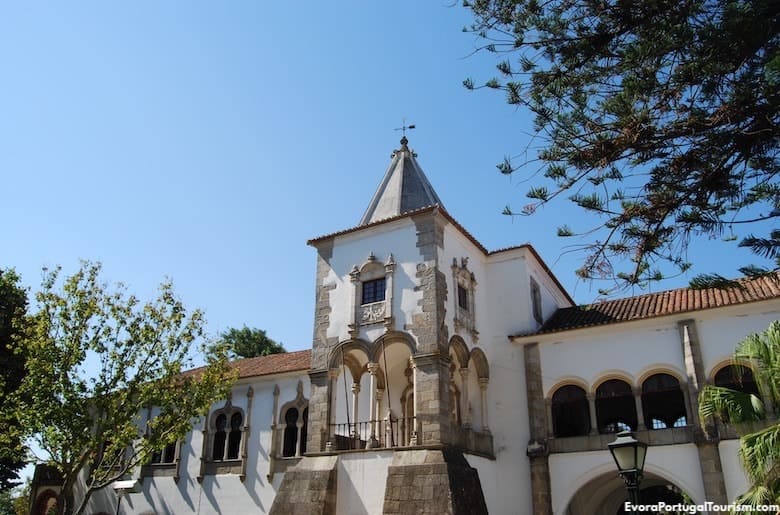
Perfectly located for a relaxing break after visiting the Chapel of Bones, the Public Garden is Évora’s most delightful green space. It’s home to what is left of the former royal palace, the 16th-century “Queen’s Gallery” of Dom Manuel Palace, mixing Renaissance, Gothic, and Manueline architecture. It has been restored to house a museum dedicated to the history of Évora.
See the Dom Manuel Palace Guide.
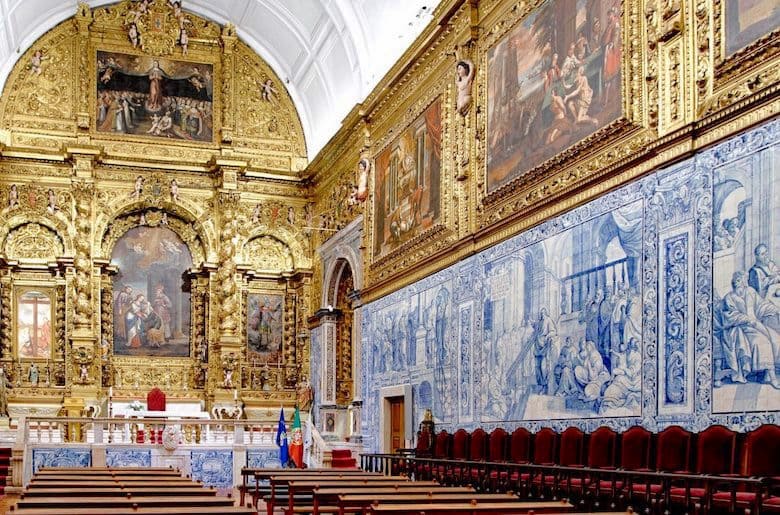
This small church with a plain façade hides a beautiful interior from the early 1700s, created by some of the greatest baroque masters in Portugal. It has a gold-covered altarpiece, and its walls are lined with tile panels representing the seven spiritual works of mercy, while the paintings illustrate the seven corporal works of mercy.
See the Igreja da Misericórdia Guide.
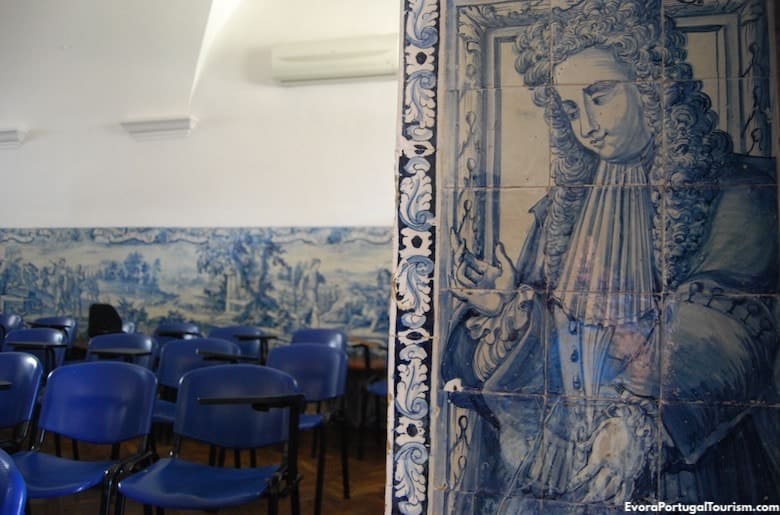
Founded in 1559 and expanded in the mid-1700s, this was built as a Jesuit college. It preserves most of the original architecture, like an elegant Renaissance cloister and baroque tile panels in the classrooms. It’s open to visitors, even during classes.
See the Évora University Guide.
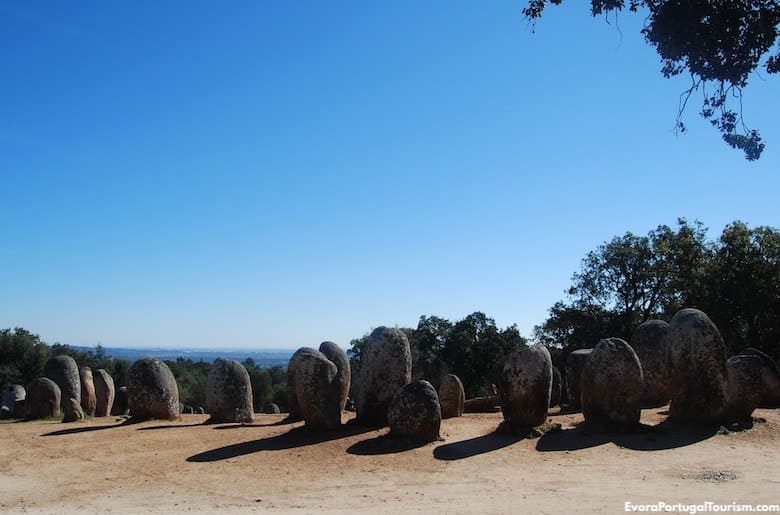
The Évora region is surrounded by several prehistoric monuments, and this one is the most remarkable. It’s known as the “Portuguese Stonehenge,” with nearly 100 oval boulders creating a circle, used for sacred rituals and astronomical observation. Predating the famous English monument by 2000 years, it’s one of Europe’s largest and one of humankind’s oldest prehistoric sites. There's a Visitors' Center nearby, which explains the history and culture behind it, but if you can’t make it there, pass by Centro Interpretativo do Megalitismo, an exhibition space in a former convent in central Évora, which provides information about it and other megalithic sites in the region.
See the Almendres Cromlech Guide.